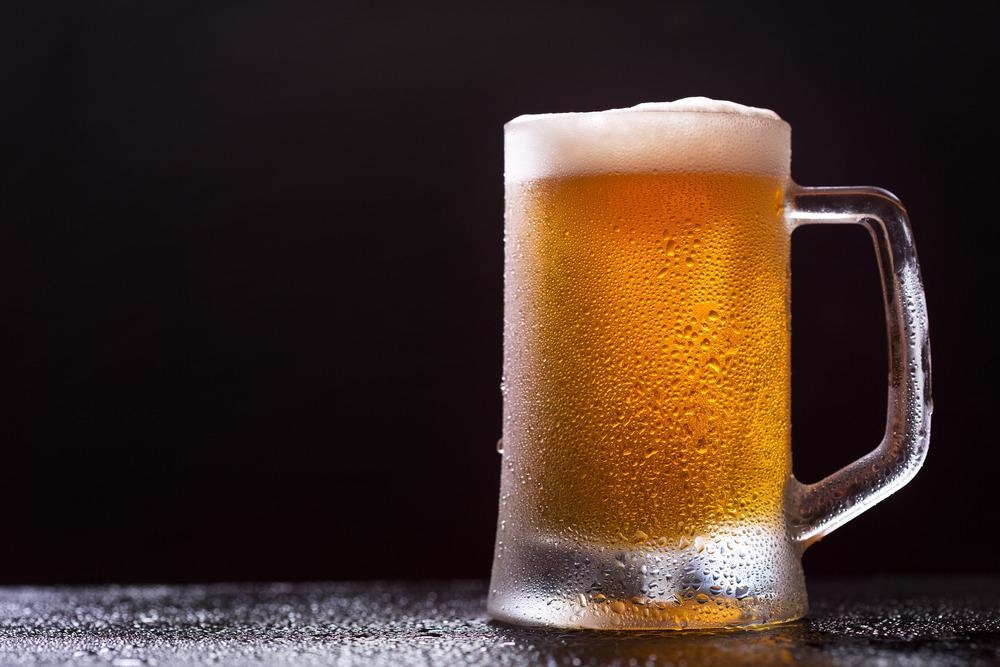Beer brewing practices date from at least 7000 BCE and maybe even to the advent of agriculture because most cereals can instantly ferment upon exposure to airborne yeasts.

Image Credit: Nitr/Shutterstock.com
The code of the Babylonian king Hammurabi (rule 1792 to 1750 BCE), whose laws 108 to 111 regulate beer sales, indicates that people have been concerned about protecting beer quality via legislation for millennia.
For instance, the Bavarian “Reinheitsgebot” (“Purity Law”) of 1516, which is usually regarded the world’s oldest still functional—along with modifications—food regulation permits only water, barley, and hops as ingredients for brewing beer (where the barrels were confiscated as a penalty for transgression).
In a new study, the science of beer has reached a whole new level. Researchers from Germany used advanced analytical methods to disclose the metabolic complexity—tens of thousands of different molecules—of commercial beers obtained worldwide.
The study was reported recently in the journal Frontiers in Chemistry.
Enormous Chemical Complexity
Beer is an example of enormous chemical complexity. And thanks to recent improvements in analytical chemistry, comparable in power to the ongoing revolution in the technology of video displays with ever-increasing resolution, we can reveal this complexity in unprecedented detail.
Philippe Schmitt-Kopplin, Study Corresponding Author and Professor, Head of Comprehensive Foodomics Platform, Technical University of Munich
“Today it’s easy to trace tiny variations in chemistry throughout the food production process, to safeguard quality or to detect hidden adulterations,” added Schmitt-Kopplin, who is also the head of the Analytical BioGeoChemistry research unit at the Helmholtz Center in Munich.
Schmitt-Kopplin and his collaborators utilized two robust techniques—ultra-performance liquid chromatography quadrupole time-of-flight mass spectrometry (UPLC-ToF-MS) and direct infusion Fourier transform ion cyclotron resonance mass spectrometry (DI-FTICR MS)—to disclose the complete range of metabolites present in 467 types of beer brewed in Europe, East Asia, Africa, the United States, and Latin America.
These beers included craft and abbey beers, top-fermented beers, lagers, and gueuzes brewed from barley as the source of starch for fermentation, or barley plus corn (maize), rice, or wheat; these methods have exhibited complementary strengths.
Chemical diversity has been unraveled directly by DI-FTICR-MS throughout all beers, predicting chemical formulas for the metabolite ions present in them.
Then, the researchers applied UPLC-ToF-MS to a subset of 100 beers to examine the outcomes with resolution on the potential isomers. UPLC-ToF-MS involves using chromatography to initially isolate ions with similar masses and fragmentation of the mass ions to daughter ions, thereby enabling the accurate molecular structure to be predicted.
Metabolites were positioned in connection within the “chemical space,” each associated with one or more others via a single reaction, for instance, adding sulfate-, hydroxyl-, methoxy-, or sugar-group to the molecular backbone, or converting an unsaturated bond into a saturated bond.
This enabled a reconstruction of a metabolite network resulting in the final product, comprising almost a hundred steps with a starting point in molecules from the original cereals, produced from the amino acid tryptophan. The products acquired from these are the secondary metabolites, which are exclusive to every cereal.
Powerful Method for Quality Control
Our mass spectrometry method, which takes only 10 minutes per sample, should be very powerful for quality control in food industry and set the basis of novel molecular markers and non-targeted metabolite profiles needed in foodstuff inspection.
Philippe Schmitt-Kopplin, Study Corresponding Author and Professor, Head of Comprehensive Foodomics Platform, Technical University of Munich
The researchers discovered nearly 7700 ions exhibiting exclusive masses and formulas, such as phenolics, nucleotides, peptides, lipids, carbohydrates, phosphates, and organic acids. Of these, almost 80% are not yet explained in chemical databases. Since there are possibilities of each formula covering up to 25 various molecular structures, this amounts to tens of thousands of special metabolites.
Here we reveal an enormous chemical diversity across beers, with tens of thousands of unique molecules. We show that this diversity originates in the variety of raw materials, processing, and fermentation.
Stefan Pieczonka, Study First Author and PhD Student, Technical University of Munich
Pieczonka continued, “The molecular complexity is then amplified by the so-called ‘Maillard reaction’ between amino acids and sugars which also gives bread, meat steaks, and toasted marshmallow their ‘roasty’ flavor.”
“This complex reaction network is an exciting focus of our research, given its importance for food quality, flavor, and also the development of novel bioactive molecules of interest for health,” added Pieczonka.
Journal Reference:
Pieczonka, S. A., et al. (2021) On the Trail of the German Purity Law: Distinguishing the Metabolic Signatures of Wheat, Corn, and Rice in Beer. Frontiers in Chemistry. doi.org/10.3389/fchem.2021.715372.